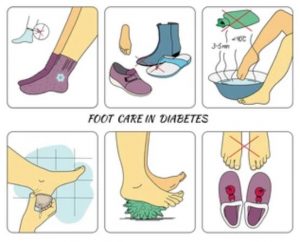Diabetes is a worldwide epidemic, and its prevalence is increasing day by day. According to WHO estimates, there are currently about 175 million diabetic patients in the world, and it will reach 300 million by 2025. The prevalence of diabetes in China is also increasing rapidly. In the past, diabetes was considered a disease of middle-aged and elderly people. In recent years, it has been discovered that with the increase in obesity among children and adolescents, whether in the West or China, diabetes in children and adolescents, especially the number of patients with type 2 diabetes, has also increased rapidly, which has become a major health problem early in life.
Diabetes has a high incidence of complications, causing tissue and organ damage, disabling and fatal, and serious harm
Diabetes is a disease of metabolic dysfunction, and currently presents a trend of high incidence and younger age. Related studies have found that the immune system function of diabetic patients will be abnormal under the influence of the disease, and the body’s long-term high blood sugar state will cause the nerve endings and microvascular disease to cause sensory disturbances in the distal limbs, and hypoxia and ischemia in the skin. And other abnormal conditions, so diabetic patients are more prone to skin lesions. Today, we will introduce skincare for diabetic patients to prevent diabetic skin lesions.

Skincare for diabetic patients
1. Dress loosely
Diabetics should pay attention to wearing loose cotton clothing, travel shoes, cloth shoes, or moccasins. Try not to wear wool or chemical fiber underwear, so as not to irritate the skin and cause itching. Change clothes frequently, wash and disinfect towels frequently, and keep the sheets dry and clean.
At the same time, because the diabetic foot is very insensitive if sand is put in the shoes, it is often not felt, which will cause secondary damage to the soles of the feet. It is recommended that you should pay special attention to the insoles.
Diabetic foot is the result of the combined effect of diabetic lower extremity vascular disease, neuropathy, and infection. In severe cases, it can cause foot ulcers and even amputation. There was an average of 1605 amputations due to diabetes in the United States from 1989 to 1992. Foot ulcers were the main cause of amputations. 40% of foot and lower-limb amputations in adults are caused by diabetes. A British study followed up 469 diabetic patients with no previous foot ulcers and found that 10.2% of the patients had foot ulcers for 4 consecutive years. The amputation rates of diabetic men and women were 10.3 times and 13.8 times higher than those of non-diabetic people of the same sex. The epidemiological data on diabetic foot in China is still lacking.

2. Check the skin
Check the skin carefully every day, focusing on the vulnerable parts of the skin: extremities, fingers, toes, etc. for ulceration, color, and dorsal artery pulsation, and whether there are abnormal feelings such as local numbness, pain, coldness, or fever. Achieve early detection and early treatment. If itching, rash, or ulceration has occurred, seek medical attention immediately.
3. Daily cleaning
Diabetic patients need to clean their skin, wash their face, feet, and vulva every day. When washing your face, the water temperature should not be too high, and the towel should be soft to reduce skin irritation. Appropriate use of mild facial cleanser and facial soap to enhance skin cleansing, but be careful not to rub or wipe your face hard. Bathing frequency and time should not be too long, avoid bathing, pay attention to moisturizing after bathing, and avoid using alcohol-based moisturizers.
4. Do good sun protection
Daily sun protection for diabetic patients is very important. In the hot summer, strong sunlight can dry out and burn the skin. When you need to go outside in the sun, you should wear anti-sweat shading clothing, hats, umbrellas, sunglasses, etc., and apply sunscreen outside. Most sunscreen products are oily and have a high probability of clogging skin pores. Strengthen skin cleansing.
5. Lifestyle and nursing
Strictly quit smoking, because smoking will cause skin capillaries to constrict, and the skin’s oxygen and nutrient supply will decrease, which is not conducive to keeping the skin healthy. The skin in the rubbing area needs to be kept dry by applying a small amount of talcum powder. These areas include the toes, armpits, groin, breast folds, and so on. To keep dry parts of the skin moist, apply skincare products that contain petroleum jelly, silicone oil, lanolin, and other strong moisturizing effects. During the cold, dry months, keep the room moist. Drink plenty of water to keep your skin moisturized, eat less irritating foods and keep a good mood.

6. Medication
For most patients with dry skin and mild itching, it is ideal to strengthen the moisturizing effect. Anti-itch drugs can be used externally for local itching, and antihistamine drugs can be taken orally for severe and extensive itching. It is not advisable to forbearance without medicine. Scratching the ulcer may lead to serious consequences such as skin infections.
The skin disease of diabetes is daunting. Therefore, it is recommended for diabetic patients: control blood sugar, strengthen care, understand the possible skin lesions of diabetes, early detection, and early treatment, to prevent skin complications.
